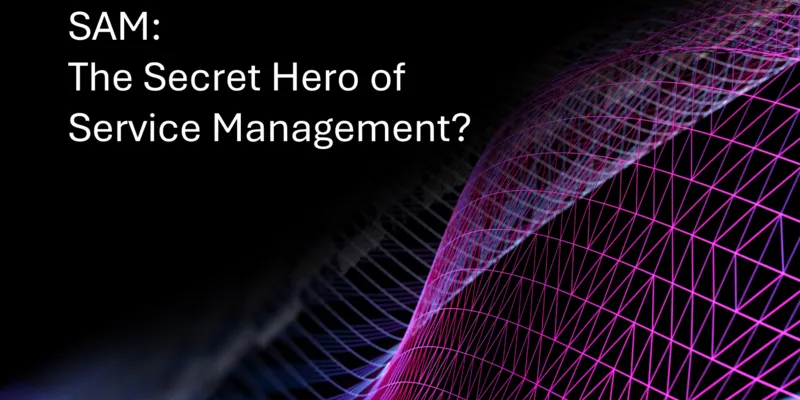Is SAM the Secret Hero of Service Management?

Tuesday 31st May 2022
SAM, really?
Let’s be honest, Software Asset Management (SAM) causes problems: it tells people they can’t have software; it finds requirements that are unbudgeted, and it’s really difficult to get right. However, as end users demand an experience more akin to internet shopping, and service desks strive for better efficiencies built on sharing of digital data, SAM is undergoing something of a renaissance.
If I hear CMDB one more time….
Whether you are a true believer or a buzzword sceptic, the Configuration Management Database (CMDB) has a vital role in the digital IT strategy. However, the CMDB is a system, a framework, a container that is only as good as the data that is put into it. Cue SAM, which for decades has strived to create accurate, up-to-date, and relevant records of the software assets an organisation has. And SAM Tools, which have invested millions in converting raw software executable data into useable information, or even knowledge (they haven’t quite scaled the peak of the Data, Information Knowledge, Wisdom pyramid) through legions of analysts painstaking researching software facts.
The creation of the CMDB is SAM's time to shine, instantly populating high quality software (and possibly computer and user) data including what is installed, what is used and what is owned. This will be vital to building the Service Map; what database does my service run on, where is that installed or consumed from, how much does that cost, is it supported, when does the license expire, etc. If a CMDB project is not talking SAM, then a key building block is missing, and any resulting structure is going to find itself wobbling at the first test.
Centralise everything – I mean EVERYTHING.
If SAM is so obviously vital to Service Management, then surely it is going to exist within the Service Management Tool. Yes?
Since the spectre of the Millennium Bug launched SAM tools into the mainstream, they have enjoyed a relatively unchallenged niche. That is changing as Service Management tools aim to provide this essential function within their own capabilities. This makes sense because the more integrated the data and the functionality are, the better that SAM will be able to support Service Management.
No more niche?
Does this mean standalone SAM tools are dead? Not necessarily – there are two good reasons that SAM tools remain separate.
Firstly, there’s no denying that SAM tools have managed to make incredibly complex license management much easier through in-built intelligence and carefully designed reporting. Service Management tools have come on leaps and bounds in terms of SAM capabilities, but they haven’t quite caught up with the best features of the standalone SAM solutions.
Secondly, there is the adverse impacts of digital data sharing; SAM relies on accurate, up-to-date, and detailed data – when the SAM tool collects this data for itself (outside of the CMDB), any errors or omissions can be spotted and rectified relatively quickly. When errors or omissions are in data that is owned or managed by multiple parties, the time to resolve issues can be much slower. This is especially true when the detailed, micro-data is not needed by the data Guardian or Owner, or when there is reliance on multiple parties.
Nothing is simple…
Hopefully by this point you agree that SAM is essential to IT Service Management (as well as other IT functions), and a key part of any CMDB project. The question now becomes the best way to integrate the two, and disappointingly there is no single right answer.
The best approach will depend on myriad variables: maturity, resources, technologies, strategy, etc. Bytes is successfully delivering SAM Services in support of IT Service Management using both stand-alone SAM tools that feed into the CMDB, and using SAM Modules of Service Management Tools with fully integrated digital data sharing. Each scenario has challenges that we have had to learn from and overcome, and neither is perfect, but both are delivering tangible benefits to the recipient organisations.
The most important thing that organisations can do is to properly plan their SAM and IT Service Management strategies with consideration of people, process, products, and partners. The benefits of integrating SAM functions and data are extensive, but the ‘right way’ to do it for each organisation will be as different and unique as the organisations themselves. The only consistency is that SAM will be key to IT Service Management.
Want to know more?
Click HERE to see our recent webinar about Sharing Digital Data
Click HERE to register for our Next Gen ITAM event, where we will be discussing the role of SAM and Service Management in more detail
Or, Contact us at [email protected] to talk to one of our specialists!
Want to keep informed? Sign up to our Newsletter

